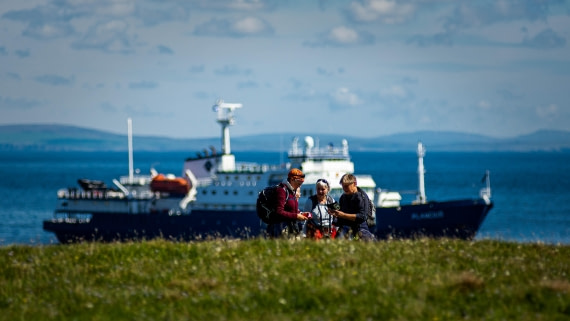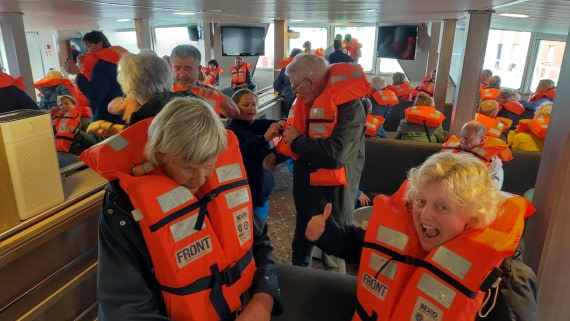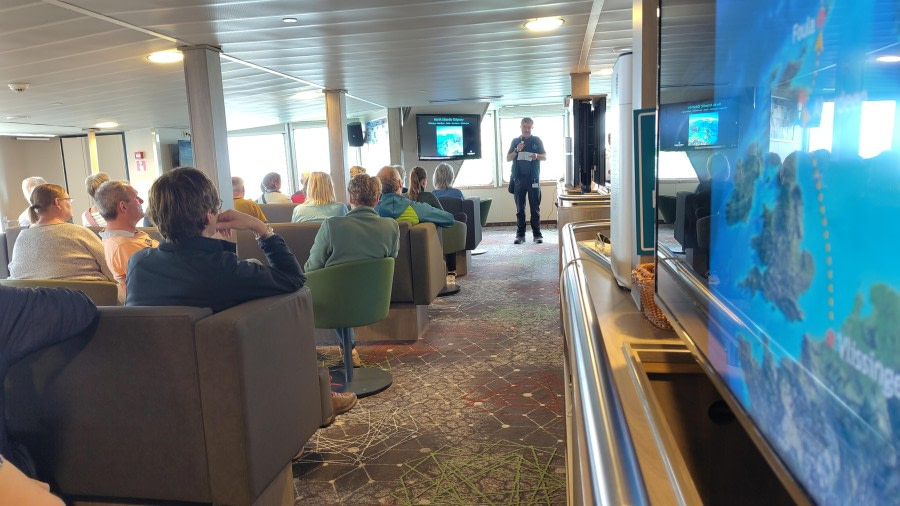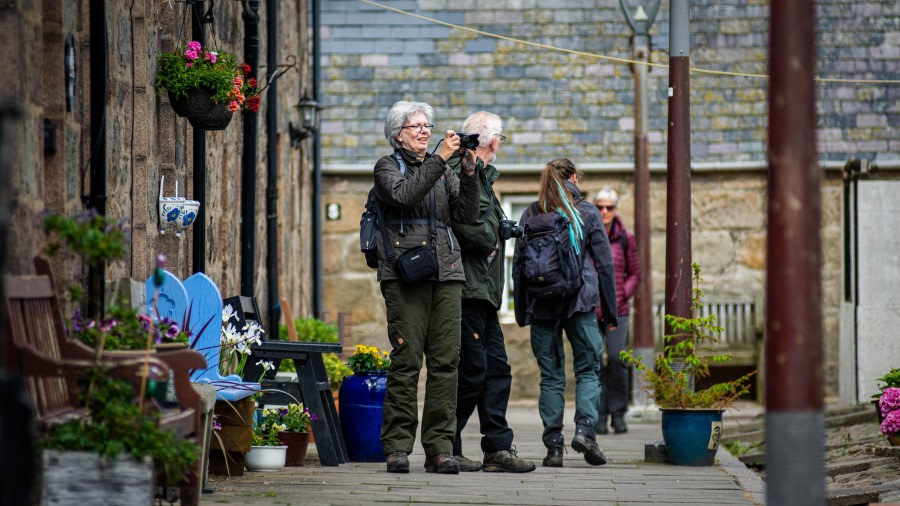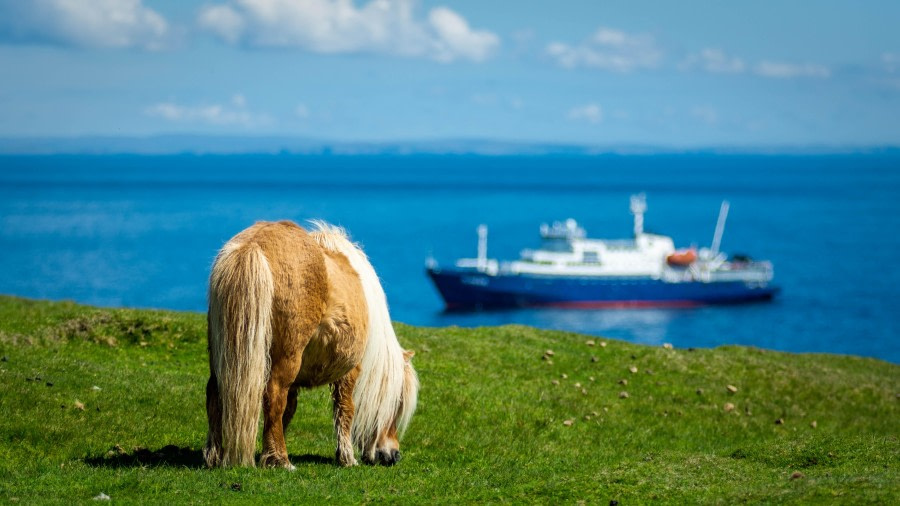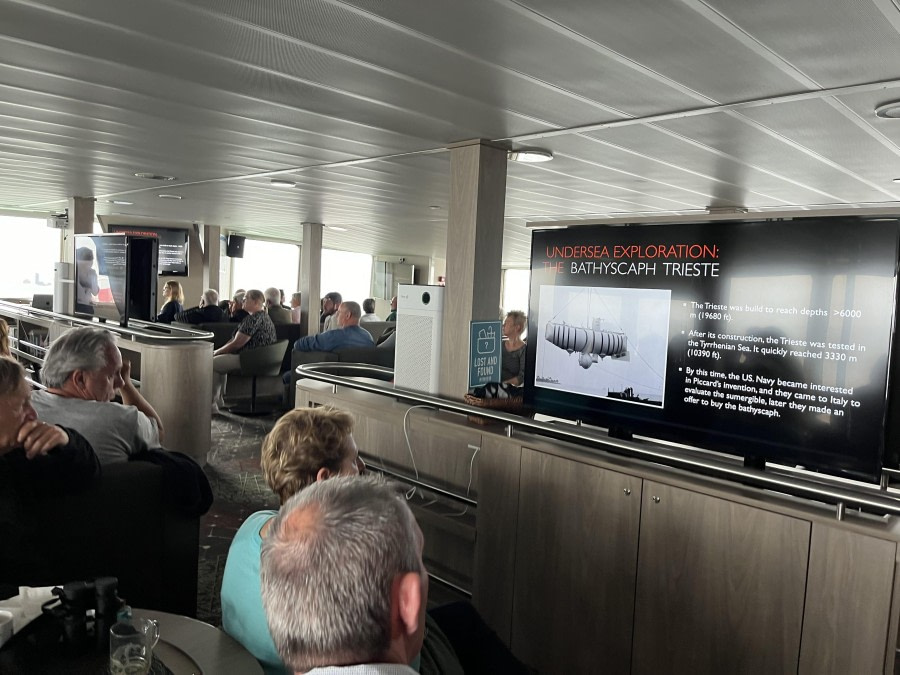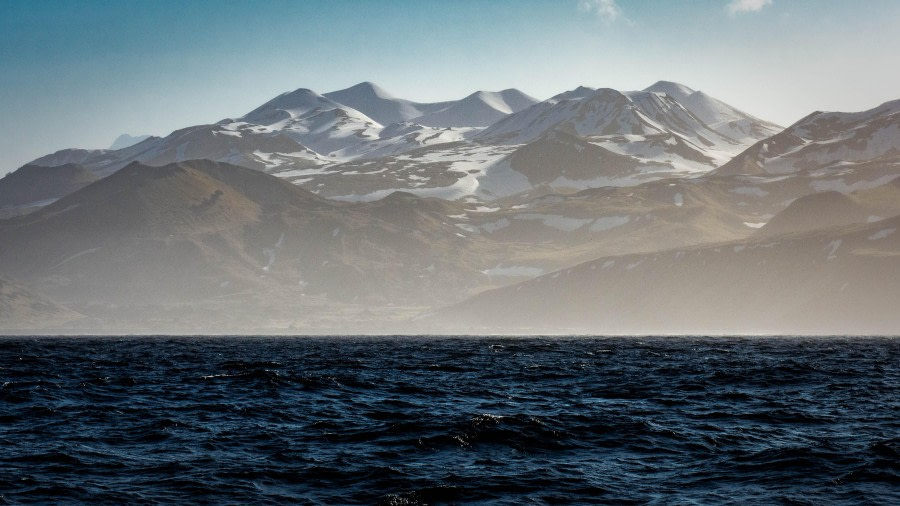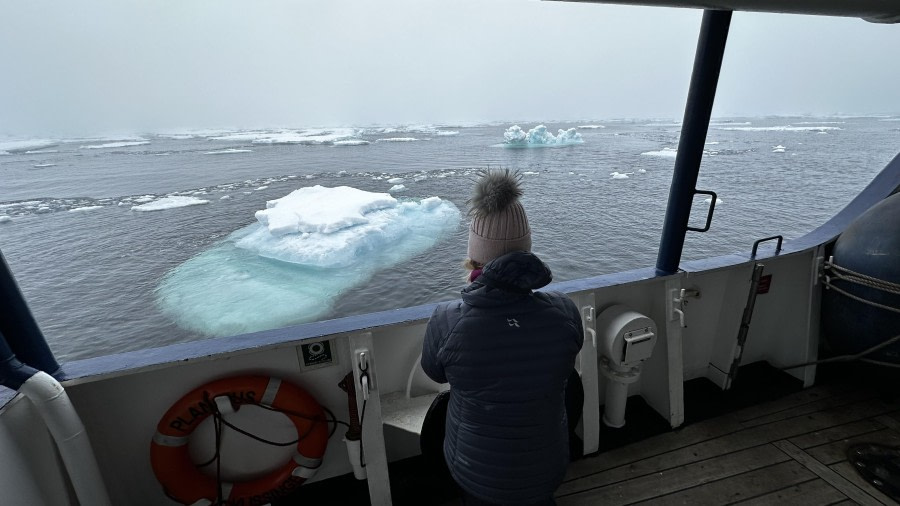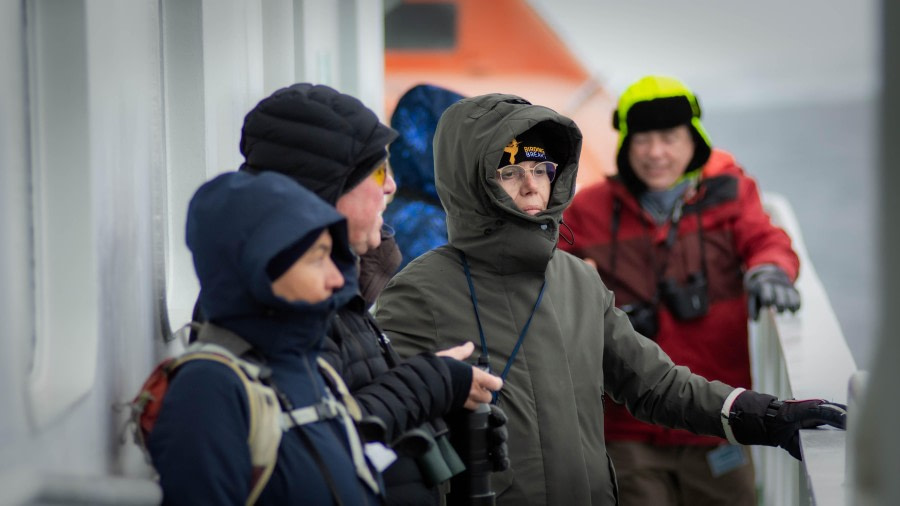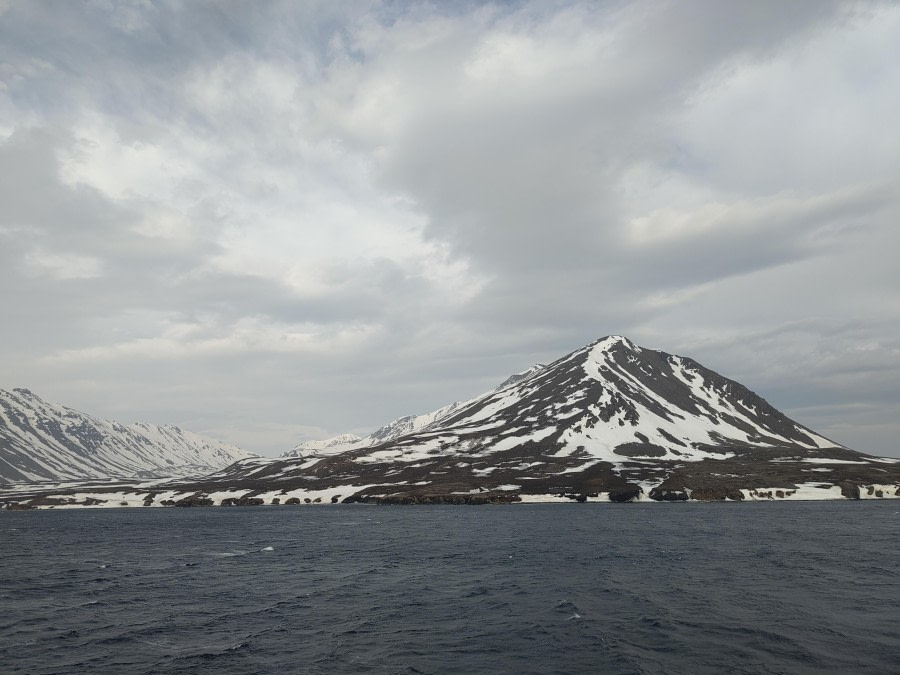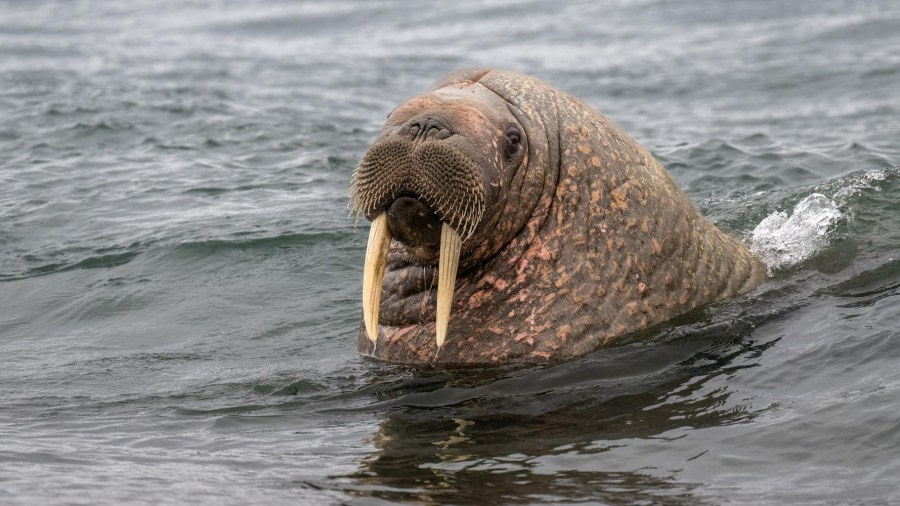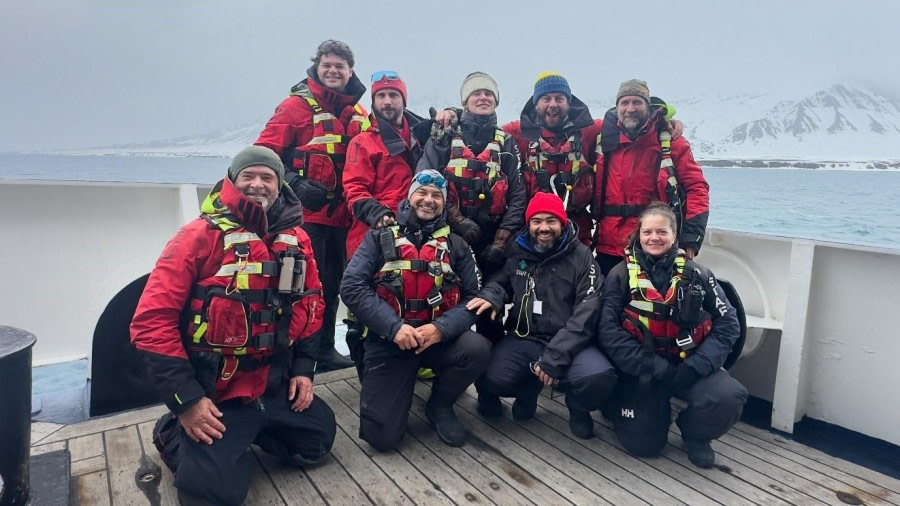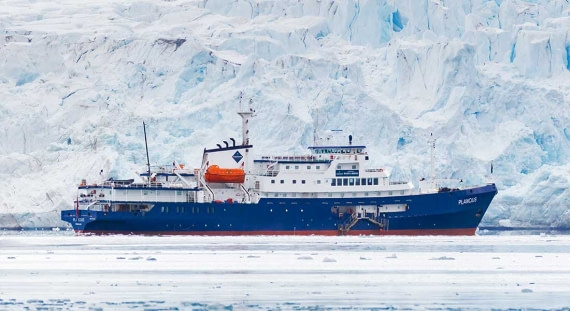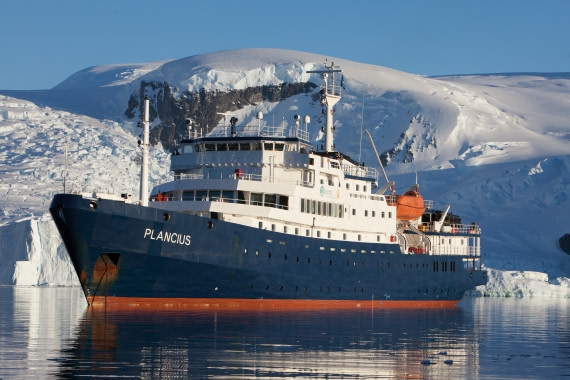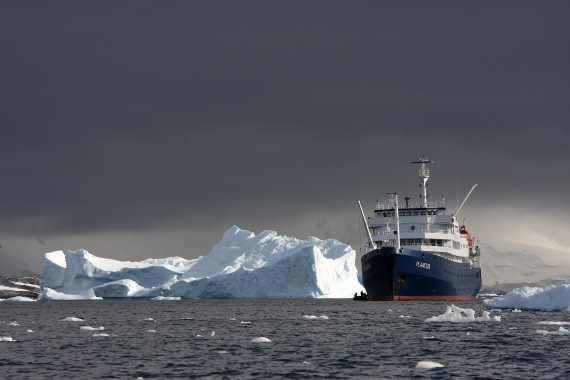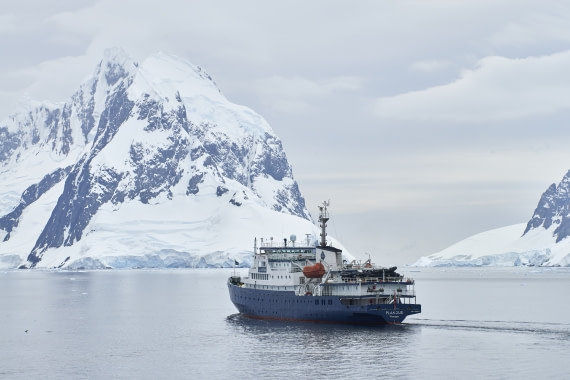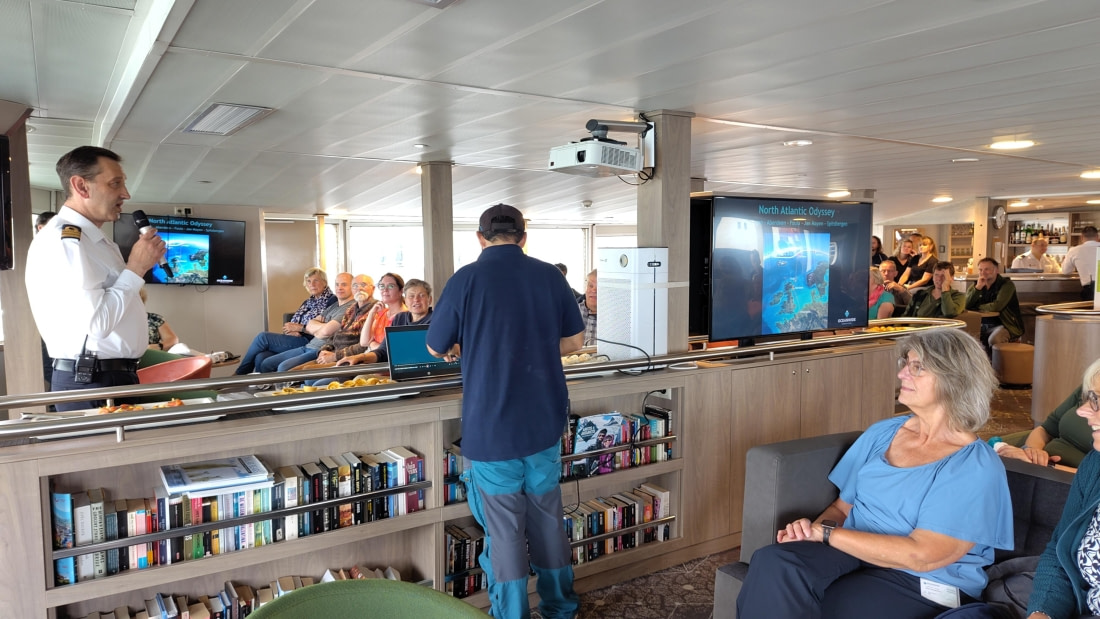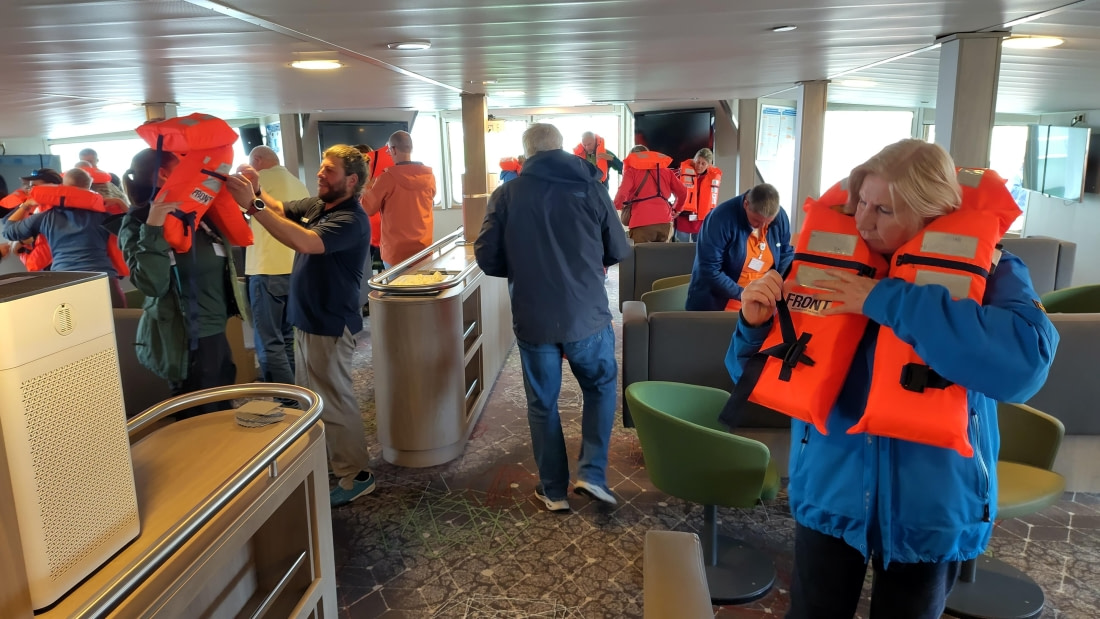| Fecha: |
28.05.2024 |
| Posición: |
57°08.6'N / 002°05.1'O |
| Viento: |
WSW2 |
| Clima: |
Parcialmente nublado |
| Temperatura del Aire: |
+13 |
Nada más despertarnos, todos sentimos un fuerte deseo de ponernos una falda escocesa y tocar la gaita. ¿Qué ocurrió? La respuesta es sencilla: Plancius, nuestro barco, se acercaba a las costas de Escocia. A través de los prismáticos, ya podíamos ver los verdes campos, donde crecían diversos cereales y otras plantas, pastos con vacas peludas y de aspecto gracioso pastando en ellos, y pequeños pueblos diseminados a lo largo de la costa y tierra adentro. Justo delante de nosotros estaba la gran ciudad de Aberdeen. Justo al norte de la ciudad, unas enormes turbinas eólicas se alzaban directamente sobre el mar. Sus aspas giraban lentamente con el viento, permitiendo a los generadores producir electricidad. El espectáculo era fascinante, pero, hay que reconocerlo, un tanto espeluznante.
Plancius se acercó al puerto y aminoró la marcha. Unos cuantos delfines nariz de botella, que habían empezado a escoltar a nuestro barco y probablemente esperaban cabalgar por la proa, se alejaron nadando decepcionados y confusos. Pronto, mientras maniobraba por la zona portuaria, el Plancius viró a popa y retrocedió lentamente aún más. Los delfines, al ver esta escena, se quedaron completamente perplejos y, decididos a que algo iba mal en el barco, se alejaron nadando para retozar en las olas y esperar a otro buque.
Mientras tanto, el Plancius estaba bien amarrado junto a uno de los muros del muelle y, en cuanto bajaron la pasarela, unos estrictos guardias fronterizos subieron rápidamente a bordo. El equipo de expedición les saludó cortésmente y les acompañó a la sala principal de la cubierta 5. Nos pusimos en fila. Formamos una larga cola y uno a uno, pasaporte en mano, visitamos a los guardias fronterizos para asegurarnos de que no había espías ni malhechores entre nosotros. Una vez finalizado el control fronterizo, descendimos por la pasarela hasta el muelle, donde ya nos esperaban los autobuses.
Hacía un tiempo estupendo, cálido y soleado, y nos esperaba un día emocionante y lleno de aventuras.
Subimos a los autobuses y recorrimos a toda velocidad las estrechas calles de Aberdeen, y tras salir de la ciudad, bajamos a toda velocidad por la autopista hacia Sands of Forvie, un paraje natural increíblemente interesante. Muchos de nosotros no estábamos acostumbrados a ver circular un autobús por el lado izquierdo de la carretera, y el volante de nuestro vehículo estaba en el lado "equivocado", pero al ver la imperturbable confianza con la que el conductor hacía su trabajo, nos tranquilizamos rápidamente y empezamos a mirar por las ventanillas, admirando las escenas pastorales escocesas.
¿Qué son las arenas de Forvie? Es un pintoresco paraje a orillas del océano, que representa el estuario del río Forvie, rodeado de dunas de arena cubiertas de hierba y arbustos. Pero lo más interesante de Sands of Forvie no es ni siquiera su belleza natural, sino los habitantes animales que han elegido las orillas del río como hogar. Entre ellos se encuentran sobre todo patos eider y algunas otras aves, ¡y también focas! A veces, dicen, pueden reunirse allí hasta tres mil de ellas.
Los autobuses aparcaron en un aparcamiento cerca de un pequeño hotel con restaurante, y caminamos por un estrecho sendero de asfalto hacia el mar. Pronto, el asfalto se convirtió en un paseo marítimo de madera y, finalmente, tuvimos que caminar sobre arena. A nuestro alrededor crecían densos arbustos con brillantes flores amarillas. Había tantas flores que parecía una especie de alfombra.
Pronto llegamos al estuario del río Forvie. La marea había bajado y el océano se había retirado, dejando al descubierto rocas cubiertas de algas, barro y arena compacta. No había focas en la orilla, ¡pero sí muchos patos! Los aficionados a la ornitología montamos nuestros trípodes con catalejos y empezamos a observar la horda de plumas, mientras los demás paseábamos por la orilla. El río Forvie no es ancho: si cogías una piedra y la lanzabas con un buen balanceo, podías llegar a la orilla opuesta. (Pero no lo hagas, ¡recuerda que hay muchos pájaros!) De vez en cuando se veían salir a la superficie, en medio del río, cabezas de formas extrañas con orificios nasales desproporcionadamente grandes: eran focas grises. Resoplaban y olfateaban con avidez y curiosidad el aire lleno de olores desconocidos.
El tiempo asignado a nuestro paseo voló sorprendentemente rápido, y pronto llegó la hora de volver a los autobuses y dirigirnos a la siguiente atracción natural, llamada Bullers of Buchan, significara lo que significara. Otro viaje en autobús, otra carretera, más escenas pastorales y, al cabo de media hora, llegamos a un aparcamiento, donde, tras bajar de los autobuses, encontramos un cartel con una flecha que decía "Bullers of Buchan" Tras caminar unos doscientos metros y pasar junto a varias encantadoras casas escocesas con jardines delanteros, nos encontramos en un alto y escarpado acantilado junto al mar. Los acantilados eran excepcionalmente pintorescos, pero lo más importante era la gran cantidad de aves: gaviotas tridáctilas, araos, fulmares boreales, alcas comunes y otras. Nuestros ornitólogos, rebosantes de entusiasmo, comenzaron a caminar por el borde de estos escarpados acantilados, deteniéndose de vez en cuando para colocar sus trípodes con catalejos, ajustar los oculares y, de vez en cuando, hacer un alto en sus observaciones para tomar algunas instantáneas con sus cámaras. Los que no estaban interesados en las aves se limitaron a disfrutar de la belleza natural, el aire fresco y el buen tiempo. Eran ya las dos de la tarde, así que muchos de nosotros, al encontrar un lugar adecuado, nos acomodamos para comer, sacando de nuestras mochilas los bocadillos que habíamos preparado por la mañana durante el desayuno. ¡Qué delicia!
Antes de que nos diéramos cuenta, era hora de volver a Aberdeen. Con la satisfacción de un día bien aprovechado y lleno de impresiones de la belleza natural local, volvimos a los autobuses y ocupamos nuestros asientos. El camino de vuelta a Aberdeen no nos llevó mucho tiempo. Por el camino, incluso conseguimos parar en un supermercado y pasamos media hora comprando. A decir verdad, el principal objetivo de la visita al supermercado era sacar dinero del cajero automático que había allí, pero, por desgracia, el cajero estaba averiado, así que todos nos llevamos una gran decepción. Sin embargo, con el telón de fondo de todos los acontecimientos del día, este fallo pareció una nimiedad, y nadie se disgustó.
Aberdeen nos recibió con un tiempo cálido pero ya no despejado. Antes de regresar al barco, hicimos una parada más en un pueblo llamado Foot Dee o Fittie. El pueblo, situado cerca del puerto, hace tiempo que pasó a formar parte de la ciudad, pero conservaba su encanto de cuento de hadas y su singularidad. Pasear por él era como adentrarse en las páginas de las novelas de Charles Dickens. Calles estrechas, jardines delanteros, bancos, gatos, chucherías en las ventanas y ropa tendida. Incluso los corazones de los escépticos más desesperanzados de las atracciones creadas por el hombre se derretían y conmovían. Realmente, el pueblo de Fittie fue la guinda del pastel y el colofón perfecto para este maravilloso día.
En cuanto regresamos al barco, Plancius fue desamarrado y puso rumbo al norte, a la isla de Foula. Los delfines, aparentemente decididos a enmendar y disculparse por su comportamiento matutino, escoltaron a nuestro barco hacia la puesta de sol, agitándose y saludándonos con sus aletas dorsales.

